The last time I saw Brídín Concannon she was walking towards me along the narrow road on the westernmost edge of Inishmaan, off the west coast of Ireland.
“Were you out at Synge’s Chair?” I called as she approached.
The sun behind her hung, unmasked by clouds, low and long in the early-summer sky.
“I was,” she said. Her voice was strong, clear, the way one’s voice can be when one is exhilarated. “I’ll start writing a play soon.”
We laughed loudly, and strode past one another. She was headed back towards the village and I towards the cliffs over the North Atlantic, and to Synge’s Chair, as the locals call the perch of limestone that the playwright frequented during his time here.
Synge, who lived from 1871 to 1909, first came to the Aran Islands in the summer of 1898, looking for inspiration and to learn the Irish language. Over the next several years he would return again and again, growing more connected to the people and the wind-and-sea-battered land they inhabited.
Synge's most famous work, Playboy of the Western World, was inspired by a story he heard on the islands – and caused riots in Dublin when it was first staged in 1906. The foremost playwright of the Irish renaissance, a movement inspired by strong political nationalism and a revival of Celtic traditions, Synge was a founder of the Abbey, also known as the National Theatre of Ireland. All six of his plays are either set in or heavily influenced by his time in Aran.
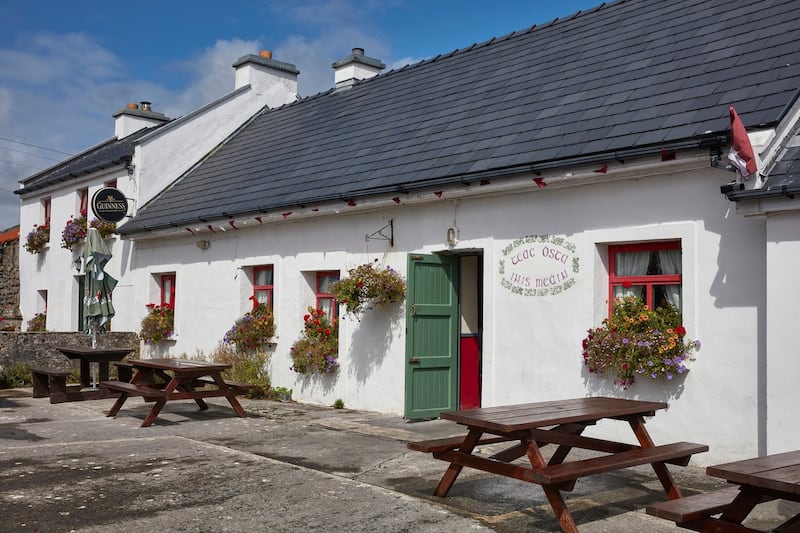
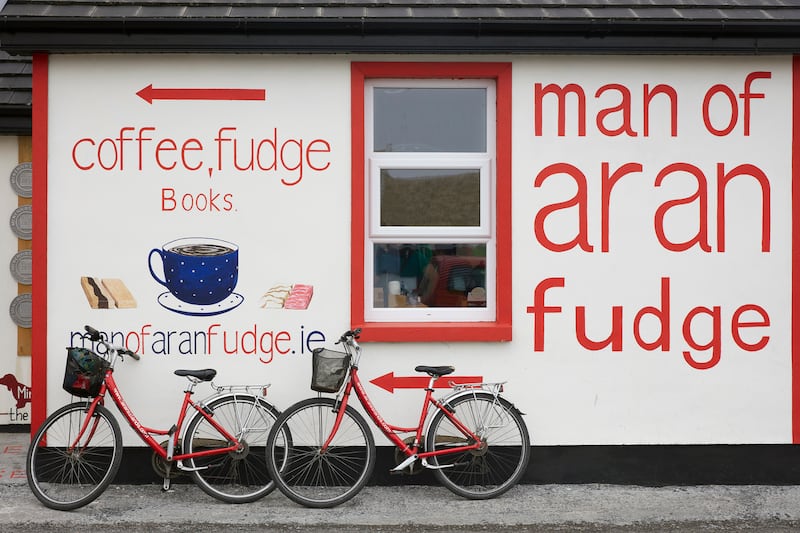
The three remote Aran Islands of Inishmore, Inishmaan and Inisheer hide in plain sight in the mouth of Galway Bay. They are still predominantly Irish-speaking, insular and, as even in Synge's era, considered a place lost in time.
It was the poet William Butler Yeats who suggested that Synge come to these islands. "Go to Aran," Yeats told his friend. "Live there as if you were one of the people themselves; express a life that has never found expression."
Synge grew more attached to the islands over time, and I had a notion that repeat trips might similarly enhance my appreciation of Aran’s subtler charms. I decided to visit the islands over several months, from early spring to high summer. I hoped that my repeated act of return and departure would elicit in me the sense of investment, as well as illuminate details and patterns of day-to-day local life that are the deep appeal of such places as Aran, places not needy of a traveller’s attention.
SYNGE TOOK A STEAMER from Galway that sailed at the mercy of the tides, on the rolling sea, and transferred to a currach, a small, round canvas-covered fishing boat, to make it to shore. These days things are slightly easier, with a daily ferry schedule as well as light-aircraft service.
My initial impression of Inishmore, the largest island, from the ferry was not dissimilar to Synge's. "A dreary rock appeared at first sloping up from the sea and into the fog," the author wrote in The Aran Islands, his classic account of his time here, first published in 1907. "The place looked hardly fit for habitation. There was no green to be seen, and no sign of the people…"
Part of the considerable allure of Aran lies in what it lacks. There are no movie theatres and few cars; electricity arrived only in the 1970s. Seventeen-year-old Thomas Kennedy summed it up for me within minutes of my arrival when he said, "There's no facilities here; you rely on the people." And while much has remained unchanged since Synge's time, society has reached the islands. Synge wasn't confronted with the dozen or so glamping structures visible on arrival, for one. And the pierside Atlantic Hotel, where Synge resided while on Inishmore, has been transformed into an Aran Sweater Market.
But beside the shop, three pubs, one food shop, restaurant and handful of bed-and-breakfasts, there is little else in the way of commerce. The 30sq km island is home to about 760 people, most clustered around the main settlement of Kilronan, with the vast majority of terrain given over to small parcels of grazing and farmland, delineated by Aran's most dominant feature, its drystone walls.

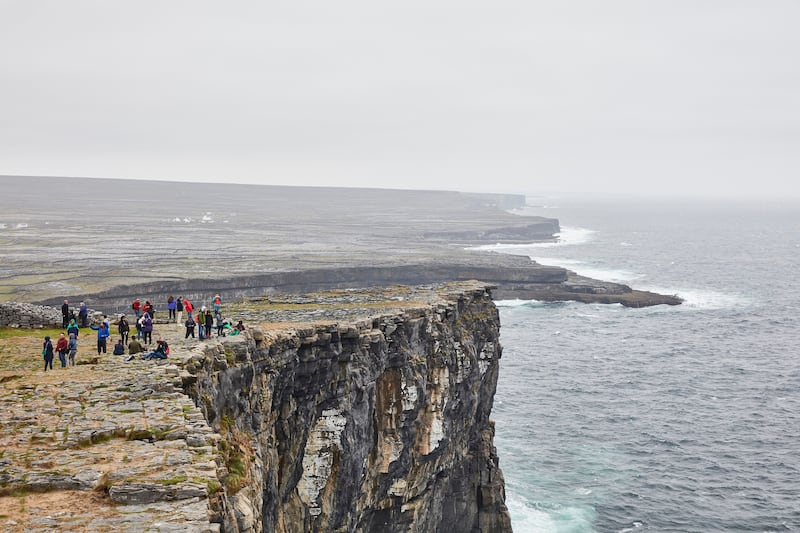
"You have to be okay within yourself to live here," Melissa Gillian told me as I stood eavesdropping on a wedding reception outside the Aran Islands Hotel. A Maine native, she married a local man and has lived on Inishmore for 10 years. Gillian was one of only a handful of outsiders I met over the months; all are married to locals. Her sentiment was one I heard often, on all three islands.
Most visitors stay only a few hours, travel a well-worn circuit and hustle back on to the boats for the comparative metropolis of Galway or the pubs of Doolin. But it is during the early-morning hours, and again later in the afternoon, once the last ferry of the day has gone, that the island's deeper appeal emerges.
IF YOU'VE SEEN ONE IMAGE of the Aran Islands it is likely to be an aerial shot of Dun Aengus, semicircular stone walls that abut a 100m sheer cliff above the Atlantic, on Inishmore. The initial walls of this ring fort – one of seven to be found on the islands – date back to 1100 BC, and it is next to impossible not to gravitate to the site while on Inishmore. A visit at daybreak was rewarded by absolute solitude as the wind whistled over the stones. Birds caught thermals below the cliffs. Clouds raced across the sun. Time stretched.
As I was leaving, the buses began to arrive. I sat on a wall eating a Nutella crepe and watched coach after coach deposit people with bumbags and (un-needed) sunhats. Although watching the human drama of group tourism from a slight remove has its own rewards, I had a date with a magic well.
Early on during Synge's first visit to Inishmore, he met a man who told him a story. A Sligo woman, it seems, had a dream that her blind son might be made to see if she travelled to a particular well out on the Aran Islands. She did so, and upon touching the well's water to her sightless child's eye he exclaimed, "O mother, look at the pretty flowers!" Synge would use this story and his visit to the site as the inspiration for his play The Well of the Saints.
My local map indicated the well as a tiny dot not far off the road, yet I’d cycled past it twice without luck. Finally I caught sight of an old sign that directed me over one stone fence and then another, through several fields, until I came upon the ruin of a tiny building, the Teampall an Ceathrar Álainn, or Church of the Four Beautiful Persons. (No one I met on the island could explain the origins of the name.) I stepped over cowpats and entered. The sun emerged and the grey stones brightened. At that moment a cow poked her head inside to see who was on her turf.
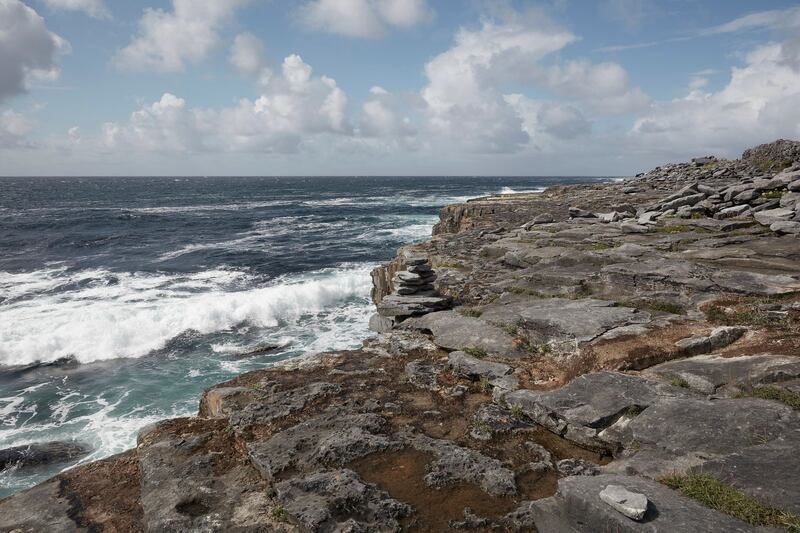
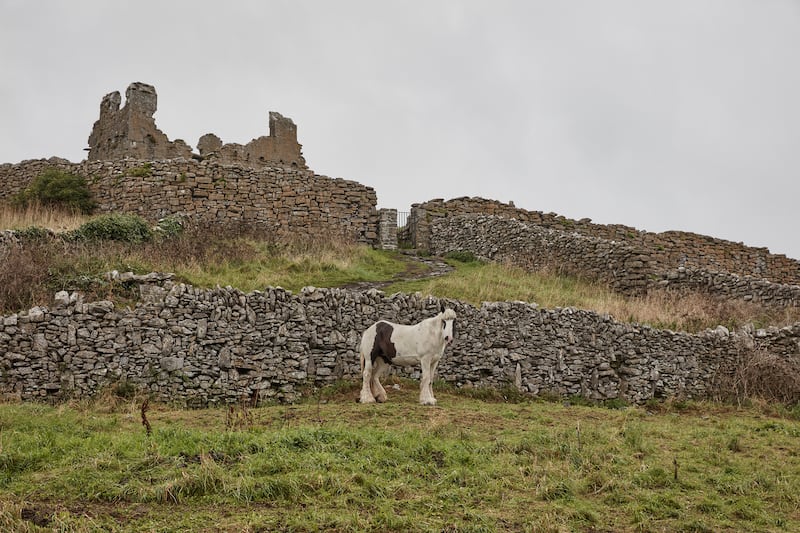
Just beside the small church I found the shallow well, still encircled by limestone, still filled with lightly running water. A tin cup had been left beside it, and someone had tossed in a small crucifix. A small pile of stones, similar to the ones that covered the well’s floor, sat next to it, apparently meant to be thrown in the well. As a long-ago lapsed Catholic, I found this ritual somehow more pagan than Christian. I tossed a few in, thinking of my children.
Back in town the crowds were converging for the afternoon ferry to the mainland. On impulse I grabbed my bag, deciding again to follow Synge’s lead – this time to another of the islands.
AFTER ONLY A BRIEF STAY ON INISHMORE the playwright headed for Inishmaan, of which he noted, "Gaelic is more generally used, and the life is perhaps the most primitive that is left in Europe. "
I wondered how much things had changed, and as I headed to the ferry for the short crossing to the middle island, Loraine Conneely, an Inishmore native, read my mind. "You'll see," she said. "It's still the same over there. It hasn't moved."
If the traveller is greeted with a (relatively) bustling arrival on the big island, no such welcome – in fact, no welcome at all – awaits the visitor to Inishmaan, which covers only 10sq km. The ferry dock is a half-hour walk from what passes for a village. (There is one shop and one bar.) Life, as it did in Synge’s time, revolves around the caprices of weather and the ties of community.
Little energy is spent looking outward – exactly how the 160 inhabitants prefer things.
Over my months of coming and going I encountered many of the same people again and again on Inishmaan: Ciarán Ó Ceallaigh, who was raising his son on the island because he wanted him "to grow up in a true Irish-speaking environment"; Bartley Conneely, who owned 21 acres and six cows, and could easily be persuaded to give a visitor a lift to the ferry; and the pair of women I often saw when out walking, who cautioned me against staying too late up at the ring fort of Dún Fearbhaí, lest the fairies interfere with me.
Synge noted many stories of strange happenings on the island. “These people make no distinction between the natural and the supernatural,” he wrote. But he also eloquently described a people living a hardscrabble life very close to the elements: “Of beings who feel their isolation in the face of a universe that wars on them with winds and sea.” Synge encountered people who carried themselves with workaday dignity and offered a humble, sincere welcome – exactly what I found on Inishmaan 120 years later.
"We're ambivalent about tourists on this island," the restaurateur Ruairí de Blacam told me. "You're left to go about your business. Get a map – you've got shoes – and off you go." De Blacam is a local boy who made (extremely) good. In 2007 he and his wife, Marie-Thérèse, opened Inis Meáin, the singular high-end restaurant and inn on the islands.
“It’s unlikely, if not impossible, we could have done this if I wasn’t from the island,” he said as I sipped some of his delicious lobster bisque and watched a setting fireball sun slash light across the limestone just outside the restaurant’s picture window. “You need the people’s support.”
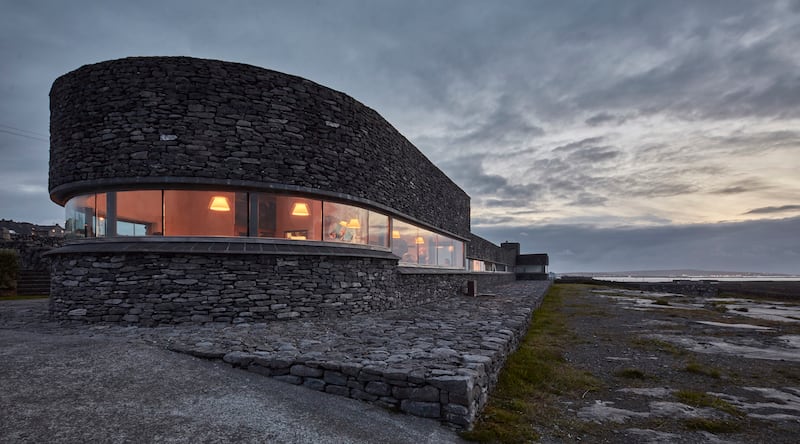
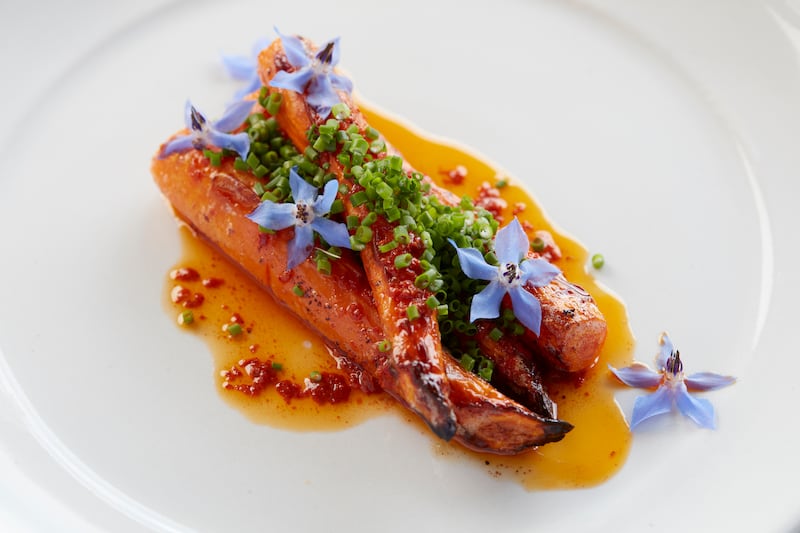
He continued: “We’re on a precarious perch out here in the ocean. People lean on each other in all sorts of ways. When I was a kid I went around with a candle and people still dressed in traditional clothes. Ireland was 20, 30 years behind the rest of the world, and Aran was 20, 30 years behind Ireland.”
The sun dropped, as Synge wrote of a similar sunset a century earlier, “like a lozenge of gold flame into the sea”, and the ocean was cast in a purple hue.
“But things are moving fast; we’re catching up a bit,” de Blacam said with a smile, and placed a dish of scallop ceviche with toasted almonds in front of me.
“What you have to understand is that the people here live a very simple life. And we’re here by choice. There’s an understated pride, and the legacy of Synge is certainly a part of that.”
Very much so: the cottage to which the playwright returned each year – a small, whitewashed, thatch-roof affair – has been preserved as a museum of sorts. Although it's technically open to the public, hours vary, and it took some doing to track down Ciarán O'Faherty, whose great-grandparents had offered Synge a bedroom in what was then their home. Once I finally cornered him in the pub, O'Faherty was happy to oblige me with a look. On this island that insists on existing out of time, the cottage's green front door was a portal through the century; things inside remain as Synge had described: "My room is at one end of the cottage… There is a kitchen with earth floor and open rafters… It is full of beauty and distinction."

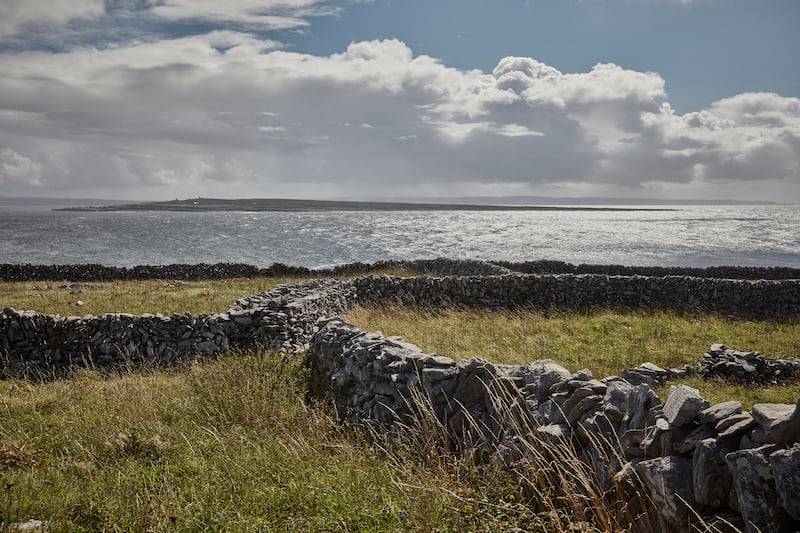
As much as Synge relished his island home, he spent most of his days out walking the land. Over on the far western side, atop high cliffs, he found a stand of rock looking out over Galway Bay and Inishmore that he would return to again and again. “As I lay here hour after hour, I seem to enter into the wild pastimes of the cliff,” he wrote.
This was when I found myself headed out to Synge’s Chair. The semicircle cluster of limestone created a natural barrier against the elements, cradled the visitor and invited lingering. Each of my visits was similar; time slipped the way time can when there is nowhere to go: at first excruciatingly slowly, then in a blink the day would be gone.
WITH JUST THE ONE PUB FOR ACTION, nights on Inishmaan are quiet, and even a loner can yearn for society. As Synge did, I made the short crossing to Inisheer, the smallest island. (On two occasions I was the only ferry passenger from Inishmaan.) Upon coming ashore, Synge was confronted with a man, "a drunkard and shebeener", who lived "with the restlessness of a man who has no sympathy with his companions". Upon my arrival I was met with an only slightly less distressing social challenge.
As on Inishmore, the day tourist trade had taken hold. There were horse-and-trap rides, coffee carts and stands selling local fudge. But just beyond the flurry of town, Inisheer, with its 250 residents, is perhaps the most physically picturesque of the three Aran Islands, and its 7.5sq km make it easy to navigate on bicycle. (Bikes were readily available directly off the ferry on both Inishmore and Inisheer. Not surprisingly, there was no bike rental on Inishmaan.)
Atop the island’s highest hill, beside the ruin of O’Brien’s Castle, Áine Ó Gríofa had put a few tables out in front of her home and called it a restaurant. I took a seat in the driveway and settled in for one of Ireland’s staple country lunches – ham and cheese on toasted white bread – while looking down across Galway Bay to Connemara in the distance.
Inisheer has three pubs, one shop and a single church.
“The priest died four years ago, and they haven’t sent another,” Ó Gríofa told me. “We’re left to our own devices.”
We chatted of the decline in the Catholic Church’s dominance over the people throughout Ireland.
“Sure it’s their own fault,” she said. “We have the old schoolteacher who goes up and leads folks in the rosary; that’s all we need.”
Watching a ferry cross the bay down below, I asked if it was heading for Inishmaan.
“I doubt it. You go over there and you don’t see a soul; they’re all hiding behind the stones.”
We laughed, but soon enough I made my way down to the dock.
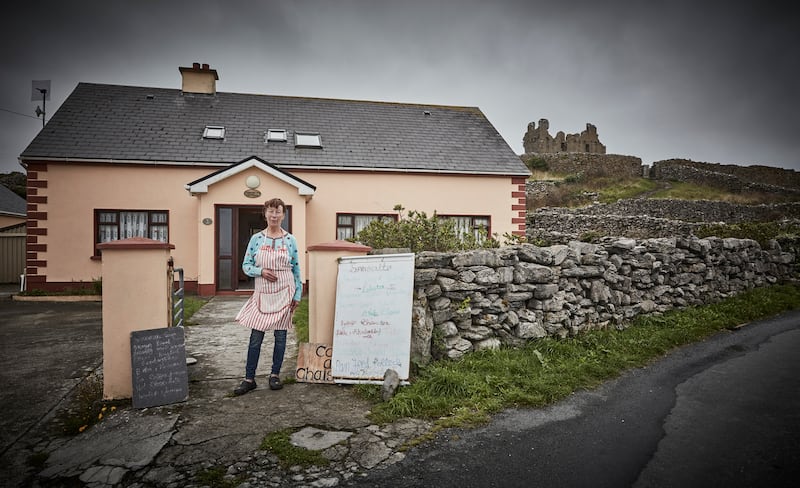
BACK ON INISHMAAN I walked past the old graveyard from which Synge took inspiration for his play Riders to the Sea and continued up the hill, across from Synge's cottage and up over five stone fences and through five small fields to the ring fort of Dún Chonchúir. Synge would "often stroll up there after a dinner of eggs or salt pork, to smoke drowsily on the stones."
Like Synge, I had sat on these walls and viewed the sea in nearly every direction, but on this evening a fog rolled in. The air became moist. Summer changed to autumn in a matter of minutes. I could barely make out the far end of the small fort enclosure. With no wind, a heavy silence hung in the mist. The century that separated me from Synge seemed suddenly trivial, and a world beyond these dry stone walls didn’t matter at all. – New York Times
Andrew McCarthy is the author of the young-adult novel Just Fly Away and the travel memoir The Longest Way Home










